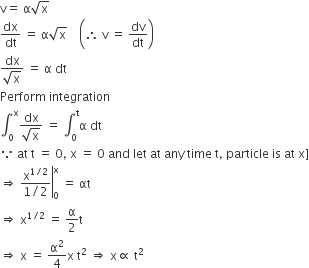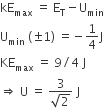A particle located at x = 0 at time t = 0, starts moving along the positive x-direction with a velocity ‘v’ that varies as v= α√x . The displacement of the particle varies with time as
-
t3
-
t2
-
t
-
t1/2
B.
t2

Sponsor Area
A particle located at x = 0 at time t = 0, starts moving along the positive x-direction with a velocity ‘v’ that varies as v= α√x . The displacement of the particle varies with time as
t3
t2
t
t1/2
B.
t2

Sponsor Area
A bomb of mass 16 kg at rest explodes into two pieces of masses of 4 kg and 12 kg. The velocity of the 12 kg mass is 4 ms−1 . The kinetic energy of the other mass is
144 J
96 J
288 J
192 J
C.
288 J
m1v1 = m2v2
A mass of M kg is suspended by a weightless string. The horizontal force that is required to displace it until the string makes an angle of 45° with the initial vertical direction is




A.


A particle of mass 100 g is thrown vertically upwards with a speed of 5 m/s. the work done by the force of gravity during the time the particle goes up is
0.5 J
-0.5 J
−1.25 J
1.25 J
C.
−1.25 J

The potential energy of a 1 kg particle free move along the x-axis is given by
The total mechanical energy of the particle 2 J. Then, the maximum speed (in m/s) is
2



B.


Sponsor Area
Mock Test Series